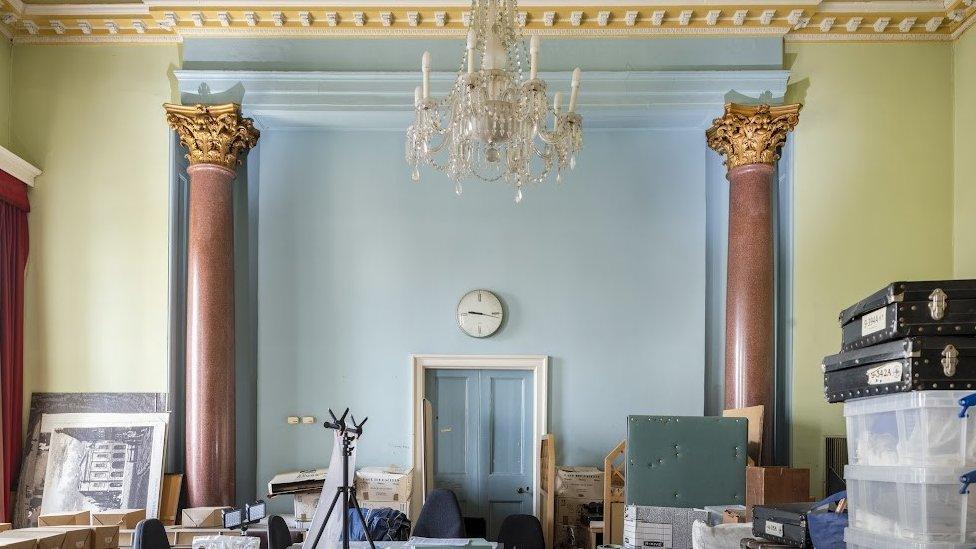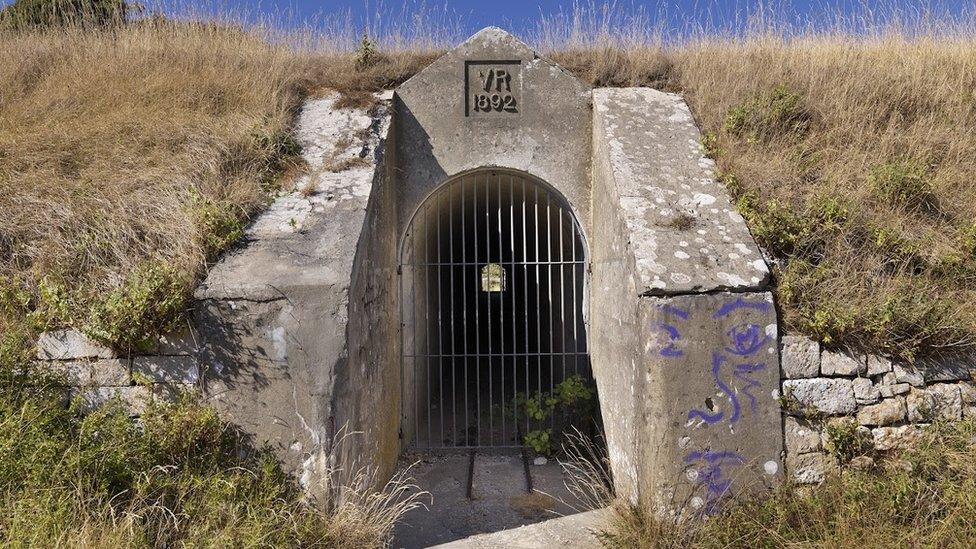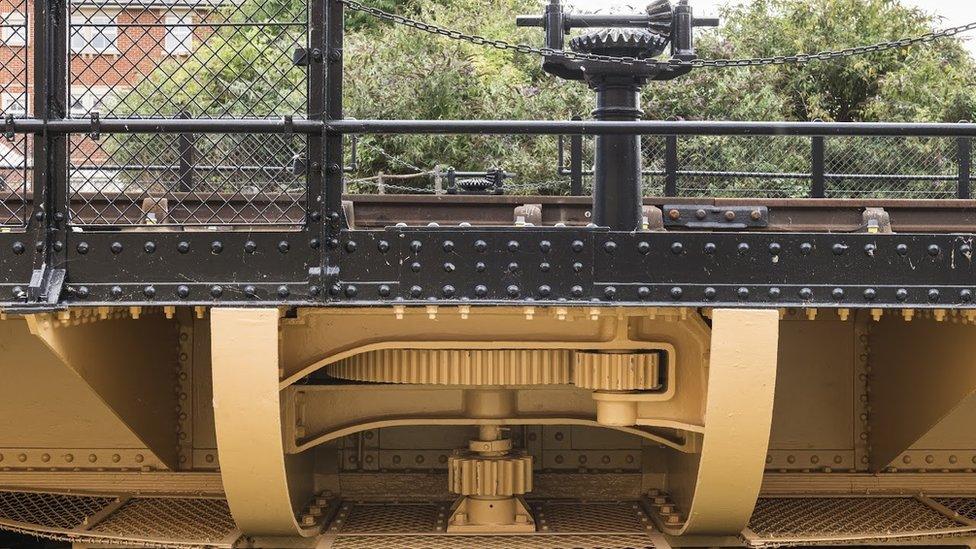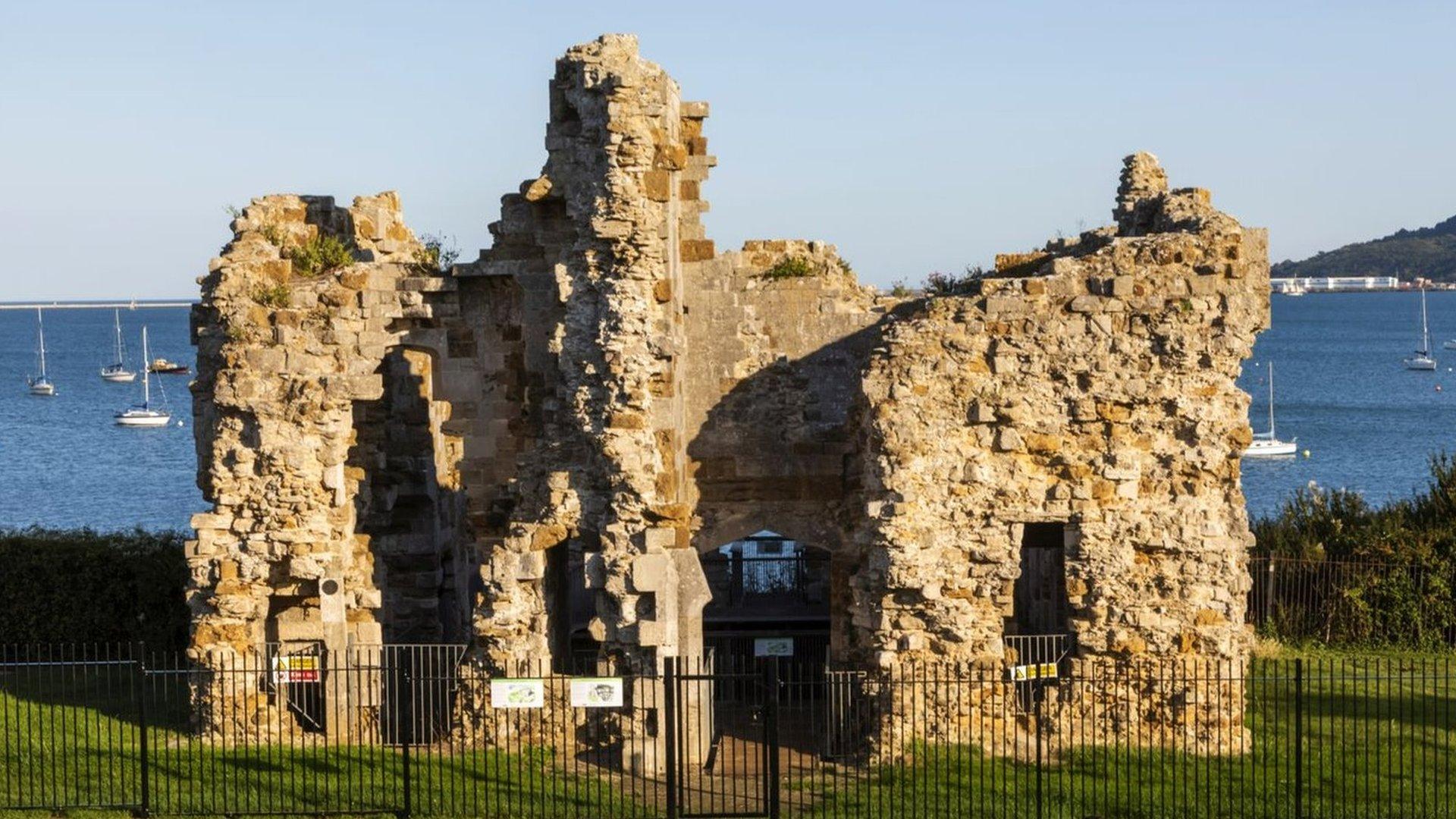Hampshire, Dorset and Oxfordshire heritage sites face contrasting fortunes
- Published

The poor state of the roof and stonework is threatening Newport's Guildhall on the Isle of Wight
Several notable places in the south of England have been saved but others are in danger of being lost, Historic England has announced.
The annual digest shows 233 sites across England have been removed from the register while 175 have been added.
Among those "at risk" are the Guildhall in Newport, Isle of Wight and High Angle Battery, on Portland, Dorset.
But the former Police Barracks in Gosport and the Swing Bridge in Oxford have had their futures secured.

Historic England said the High Angle Battery was "poorly understood and under-appreciated"
The "significant addition" to the register of the Guildhall, designed by John Nash who had strong links with the Isle of Wight, was due to the poor condition of its roofs and stonework, Historic England said.
Since 1996 the building, which is owned by the island's council, has been in use as the local museum. Last year the council spent £20,000 on emergency repairs.
Also classed as at risk is High Angle Battery, at the Verne Citadel, on Portland.
Historic England said the "fascinating complex of military buildings" built in the 1890s was part of Portland's military past and a significant element in an "arms race" in the late 19th century.
It had been placed on the register due to "ongoing erosion which is damaging some of the buildings and tunnels".
But highlights from the list of places said to have been saved included the former Police Barracks in Gosport, built as a response to the Crimean War. It will reopen in the spring as the base for the Army's offshore sailing centre.

The disused railway bridge is one of only two moving bridges on the Thames – the other being Tower Bridge in London
Pioneering engineer Robert Stephenson designed Oxford's Swing Bridge which was saved after a joint agency effort with repair work completed in the summer.
Historic England's Emily Gee said with "imaginative thinking and business planning, we can continue to regenerate historic places".
"As the threat of climate change grows, the reuse and sensitive upgrading of historic buildings and places becomes ever more important.
"Finding new uses for buildings and sites rescued from the register avoids the high carbon emissions associated with demolishing structures and building new," she added.
The register is designed to give a snapshot of the "critical health" of England's historic places and those most at risk of being lost through neglect, decay or inappropriate development.

The Grade II listed former Police Barracks in Gosport has been saved

Follow BBC South on Facebook, external, Twitter, external, or Instagram, external. Send your story ideas to south.newsonline@bbc.co.uk, external.
- Published7 September 2022
